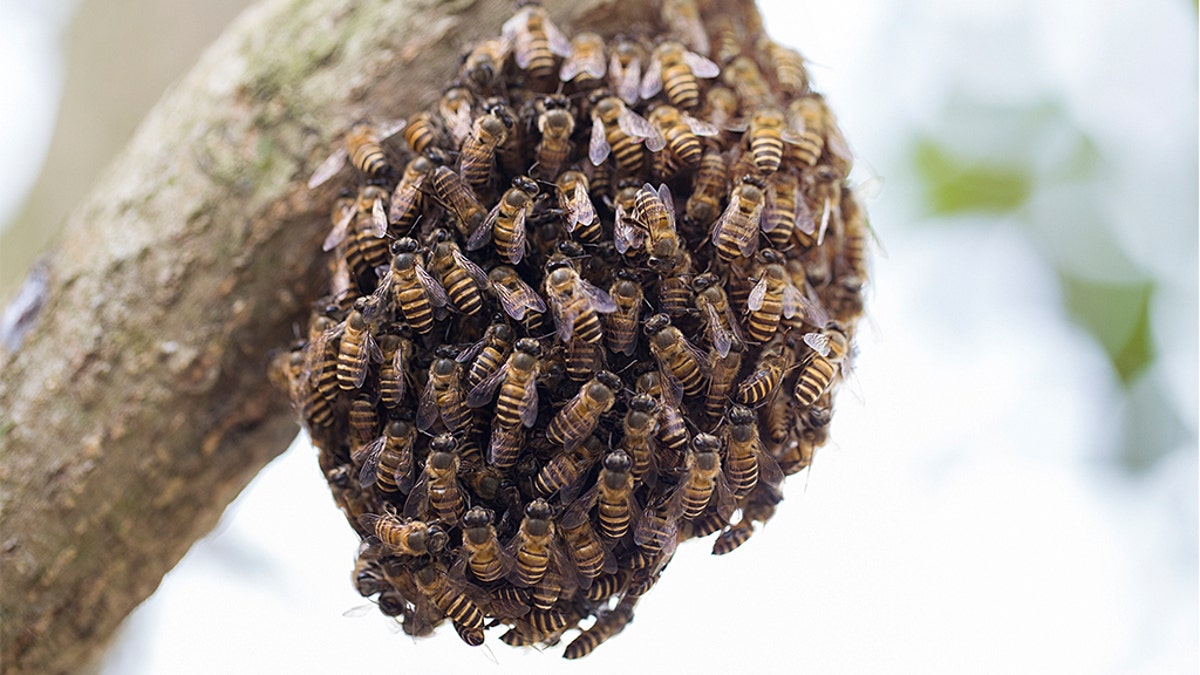
A swarm of honeybees can be frightening to some. (iStock)
With spring comes budding flowers, warmer weather, rain and, to the dismay of some, an increase in honeybees.
But there’s no need to be frightened of these small creatures, even if you come across them in a swarm, says a beekeeper in Yorkshire, a county in northern England.
“Bee Keeper Keith,” a beekeeper located in South Yorkshire, recently took to Facebook with a post offering advice to those who may come across a “large cloud of bees congregating” as the weather continues to warm.
TENNESSEE 'BEE WHISPERER' REMOVES 35,000 HONEY BEES FROM BRICK WALL
“It’s swarm season! If you see a large cloud of bees congregating somewhere or a large cluster of them hanging on a branch, sign, fence post, etc, DO NOT BE FRIGHTENED! These bees are homeless wayward travelers and looking for a new place to set up a hive,” the post reads. “They not only have no home to defend, but they are also full and fat on honey so that they have enough resources to start fresh wherever they end up. This is the calmest you will ever see a honeybee.”
A swarm of honey bees can include more than 10,000 bees, The Washington Post reported in 2015. Swarming, per the York County Beekeepers’ Association, “is part of the reproductive cycle in honey bees.”
“Though honeybees reproduce individual bees through mating and egg-laying, swarming is how honeybees create new colonies. The process of swarming involves the production of a new queen within an individual colony. When this queen emerges and is ready to take on the duties of a queen bee, the old queen (the new queen is now the queen of the old hive), along with approximately one-half of the workers in that colony, will leave the hive as a large mass of bees. This mass of bees will congregate on a tree limb, fence post or on a side of a building near the original hive,” the association explains.
OHIO'S 'BEE MAN' REMOVES MASSIVE HORNETS' NEST FROM CAR IN SHOCKING VIDEO
These nectar-consuming insects can swarm for anywhere from a few minutes to hours, and sometimes even for days, according to the association.
Scientists have warned of declining bee populations in recent years, mainly due to habitat loss, pesticide use and a phenomenon known as “colony collapse disorder,” among other factors. In fact, a 2017 study found the population of more than 700 species of bees in North America are on the decline.
Bees are important to both the environment and the economy, as they’re “responsible for one out of every three bites of food we eat,” according to Michigan State University's Department of Entomology. These insects pollinate many fruits, vegetables, nuts, seeds and other crops.
